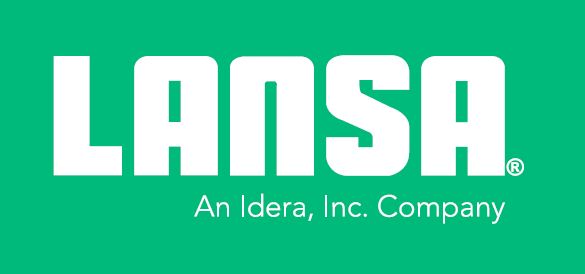Discover professional low-code for IBM i / AS400 modernization
Editor's Note: This article is excerpted from the white paper, How to Modernize Fast and within Budget (Quick Guide) - Modernization vs. Migration available for download in the MC Press White Paper Center.
The Urgency to Modernize IBM i / AS400 Applications
Legacy applications are systems that were built on old technologies such as programming languages, frameworks, operating systems, etc. Many businesses continue to use legacy software because it performs important functions and because replacing it can be too risky, expensive, and time-consuming. Using legacy IBM i / AS400 applications can cause many problems. Therefore, companies should consider the need to modernize legacy software.
Problems in Using Legacy Applications to Meet Modern-day Expectations
Vulnerable to cyber attacks
Cybercriminals use the latest technologies to carry out attacks. In order to have protection against new threats, the software must be constantly updated. Some vulnerabilities may be difficult to fix on legacy systems, or these changes may not be a priority. Therefore, legacy software is more vulnerable to cyberattacks than modernized ones. Learn more about app security threats and IBM i modernization solutions to fix them.
Difficult to maintain
Legacy systems are usually complex, requiring careful maintenance and constant updating. In addition, the number of qualified specialists with the necessary knowledge to work with legacy software is very limited. Thus, maintaining legacy systems can be much more expensive than replacing them with systems that use new, efficient technologies.
Difficult to train new employees
New employees may not have experience working with legacy systems and technologies. In addition, they may not be interested in learning legacy technologies. You will have to spend a lot of time and effort training new employees to work with legacy software.
Hurt user/employee experience
Some users or employees might prefer or be familiar with the interface of legacy software. However, newer users who are used to modern software with graphical user interfaces (GUIs) will find legacy software more difficult to use. This could result in a poor user experience and, in turn, slower operations.
Incompatible with new technologies
Legacy software may not be compatible with applications that use new technologies. Therefore, in integrating the old system with the new one, many problems may arise, making it impossible to use all the necessary functions of the new system.
Unable to meet modern business needs
The emergence of new business models requires software to perform new functions. However, making the necessary changes to legacy systems is quite difficult, if not impossible. Therefore, there is a need to use other software that can meet business requirements.
Unstable
Legacy systems that are no longer supported may have stability and bug-fixing issues that lead to crashes. Therefore, such systems are not reliable for performing important business functions.
Low performance
Over time, the software starts to run slower because it needs updated features and integrations to optimize performance. This leads to problems scaling it across multiple platforms, and it doesn't work well on mobile devices.
Modernization vs. Migration
In order to continue to use legacy software and have it meet all business needs, you need to modernize or migrate it. Modernization of legacy software is the process of updating and improving it by using the latest technologies. After performing the modernization, you will be able to save on maintenance and increase the reliability and stability of the software. The modernization process is fast and does not require much effort. Migration is the process of transferring legacy software to a new hardware infrastructure or software platform. Migration allows you to increase productivity and improve scalability, compatibility, and data security. People should consider migration when their legacy equipment can no longer meet modern requirements or cannot withstand the load. However, this process is more resource-intensive than modernization and might also cause disruptions.
Ways to Modernize IBM i / AS400 Applications
Several different legacy application modernization techniques can be used individually or in combination.
Screen Scraping
This technique uses an old user interface and presents it in an updated form. At the same time, the logic of the application does not change. The screen scraping technique updates the application at the presentation level and allows you to adapt legacy green screens to new display types.
Web Enablement
Web enablement provides access to the program through a web browser. This technology is very important because it allows you to work with your applications remotely from any place and at any time via the Internet.
Adding a New User Interface
The technique of adding a new interface, like screen scraping, changes only the presentation level and does not affect the processes of the legacy program. This technique allows you to modify and extend the content of the user interface.
Unlike screen scraping, this technique provides the ability to create scripts that can recognize screens, perform the transition between them, hide or add screen content, and convert screen content into a new presentation.
Exposing Business Functions as Callable Services
Legacy software performs functions with many dependencies and is difficult for other applications to use. In order to solve this problem, the business functions performed by the software are defined and separated into callable web services, which are created using modern technologies. When applications need to use a specific business function, they call the appropriate web service. This modernization technique provides the ability to reuse business functions in other applications.
Rewriting
Rewriting is the process of creating a new program using modern development tools. At the same time, functions of a legacy program can be used to implement equivalent functions using modern technologies and programming languages. This method allows you to create a modern software architecture and preserve the important functionality of legacy programs.
Mobile Extensions
Mobile application users are constantly increasing, so ensuring access to any modern application on mobile devices is vital. With mobile applications, businesses can connect with customers quickly and easily. Developers can pick the parts of existing apps that are important to mobile users, port them to mobile devices, and add new functionality. Mobile applications also help you to provide more value to your customers, build stronger brands, have a competitive edge in your niche, improve customer loyalty, reach a higher customer engagement level, and more.
Replacing
Replacing a program means creating a new one from scratch instead of a legacy one. In this technique, only data from the old program is saved. The process of writing a new program can be expensive and time-consuming. However, it allows you to create a modern software architecture using the latest technologies.
Technologies for Application Modernization
There are special technologies that can help in the modernization process. The use of them allows you to make the modernization process successful and reduce costs.
Refacing tools
Refacing tools allow you to easily convert legacy green screens into a modern GUI without using code. This allows you to keep existing functionality, improve its usability, and add new features.
Low-code development platform
There are low-code modernization tools that allow you to build new applications and modernize legacy ones with minimal coding. They allow you to significantly reduce the time and costs required for software development and modernization and reduce the probability of errors. In addition, when you use low-code tools, you don’t need to hire many technical specialists who are well-versed in various modern technologies.
Cloud computing
This software modernization technology is popular. Legacy applications are transferred to the cloud infrastructure and use cloud tools. This allows applications to run more efficiently and reduces the probability of failure or downtime. In addition, cloud-based tools are easy to use.
Containers
Containers allow you to bundle a runtime, an application, libraries, binaries, and configuration files. This allows applications to be deployed efficiently and run error-free in different computing environments.
Containers can be easily hosted on-premises and in the cloud, so containerization plays an important role in the software modernization process. The main advantages of using containers are greater scalability, mobility, and efficiency.
Microservices
Microservices are separate, small parts into which complex applications are divided. The advantages of using microservices are that they can be deployed, updated, and run independently. This greatly simplifies and speeds up the development process. In addition, using microservices makes it easy to make changes and scale as needed.
Orchestration and Automation
Automation is an important technology used in the modernization process because it enables the elimination of human intervention in aspects of development such as coding, security, testing, and integration, allowing for easy scalability.
Orchestration is the automation of many operational tasks related to containers.
Leverage automation and orchestration to ensure efficient deployment, scaling, networking, and security.
API management
Modern-day development often involves working with numerous APIs (application programming interfaces). These allow multiple systems, which may or may not come from the same developer or team, to communicate with each other while abstracting the code. Sometimes, when integrating with multiple APIs, developers may encounter difficulties managing these APIs or monitoring their usage.
API management tools allow developers to gain better control over the APIs they integrate with. They consist of tools for accessing and sharing APIs and their documentation. Some even have testing, reporting, and analytics capabilities.
Migration tools
As stated earlier, migrating legacy software to a new platform or hardware could lead to high expenses and disruptions. Migration tools empower businesses to manage and monitor the process of modernizing their legacy systems. For instance, cloud migration tools make it easier for businesses to migrate data or applications from on-premises servers to ones in the cloud. Using migration tools, organizations can minimize data loss and application downtime.
Creating Your Modernization Plan and Getting Buy-in from Management
IBM i application modernization is a continuous process of improving infrastructure and business functions. In order for this process to be successful, a modernization plan must first be created.
The modernization plan performs a number of important functions:…
Want to learn more? Download the complete white paper, How to Modernize Fast and Within Budget (Quick Guide) for free from the MC Press White Paper Center today. Don't miss this important resource.























 More than ever, there is a demand for IT to deliver innovation. Your IBM i has been an essential part of your business operations for years. However, your organization may struggle to maintain the current system and implement new projects. The thousands of customers we've worked with and surveyed state that expectations regarding the digital footprint and vision of the company are not aligned with the current IT environment.
More than ever, there is a demand for IT to deliver innovation. Your IBM i has been an essential part of your business operations for years. However, your organization may struggle to maintain the current system and implement new projects. The thousands of customers we've worked with and surveyed state that expectations regarding the digital footprint and vision of the company are not aligned with the current IT environment. TRY the one package that solves all your document design and printing challenges on all your platforms. Produce bar code labels, electronic forms, ad hoc reports, and RFID tags – without programming! MarkMagic is the only document design and print solution that combines report writing, WYSIWYG label and forms design, and conditional printing in one integrated product. Make sure your data survives when catastrophe hits. Request your trial now! Request Now.
TRY the one package that solves all your document design and printing challenges on all your platforms. Produce bar code labels, electronic forms, ad hoc reports, and RFID tags – without programming! MarkMagic is the only document design and print solution that combines report writing, WYSIWYG label and forms design, and conditional printing in one integrated product. Make sure your data survives when catastrophe hits. Request your trial now! Request Now. Forms of ransomware has been around for over 30 years, and with more and more organizations suffering attacks each year, it continues to endure. What has made ransomware such a durable threat and what is the best way to combat it? In order to prevent ransomware, organizations must first understand how it works.
Forms of ransomware has been around for over 30 years, and with more and more organizations suffering attacks each year, it continues to endure. What has made ransomware such a durable threat and what is the best way to combat it? In order to prevent ransomware, organizations must first understand how it works. Disaster protection is vital to every business. Yet, it often consists of patched together procedures that are prone to error. From automatic backups to data encryption to media management, Robot automates the routine (yet often complex) tasks of iSeries backup and recovery, saving you time and money and making the process safer and more reliable. Automate your backups with the Robot Backup and Recovery Solution. Key features include:
Disaster protection is vital to every business. Yet, it often consists of patched together procedures that are prone to error. From automatic backups to data encryption to media management, Robot automates the routine (yet often complex) tasks of iSeries backup and recovery, saving you time and money and making the process safer and more reliable. Automate your backups with the Robot Backup and Recovery Solution. Key features include: Business users want new applications now. Market and regulatory pressures require faster application updates and delivery into production. Your IBM i developers may be approaching retirement, and you see no sure way to fill their positions with experienced developers. In addition, you may be caught between maintaining your existing applications and the uncertainty of moving to something new.
Business users want new applications now. Market and regulatory pressures require faster application updates and delivery into production. Your IBM i developers may be approaching retirement, and you see no sure way to fill their positions with experienced developers. In addition, you may be caught between maintaining your existing applications and the uncertainty of moving to something new. IT managers hoping to find new IBM i talent are discovering that the pool of experienced RPG programmers and operators or administrators with intimate knowledge of the operating system and the applications that run on it is small. This begs the question: How will you manage the platform that supports such a big part of your business? This guide offers strategies and software suggestions to help you plan IT staffing and resources and smooth the transition after your AS/400 talent retires. Read on to learn:
IT managers hoping to find new IBM i talent are discovering that the pool of experienced RPG programmers and operators or administrators with intimate knowledge of the operating system and the applications that run on it is small. This begs the question: How will you manage the platform that supports such a big part of your business? This guide offers strategies and software suggestions to help you plan IT staffing and resources and smooth the transition after your AS/400 talent retires. Read on to learn:
LATEST COMMENTS
MC Press Online